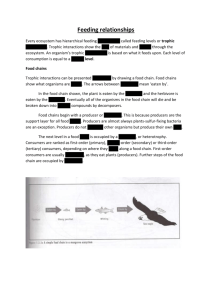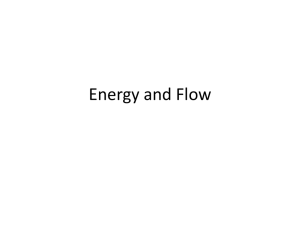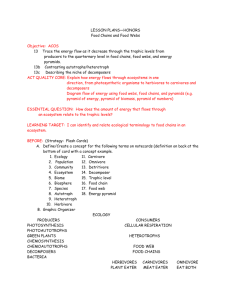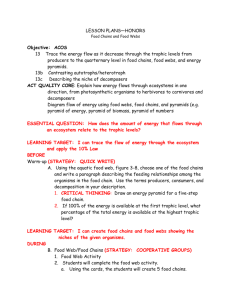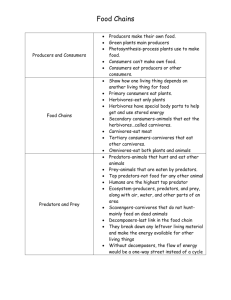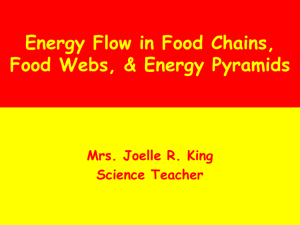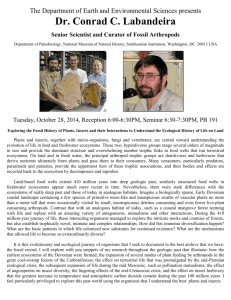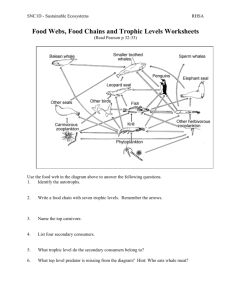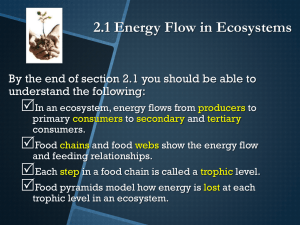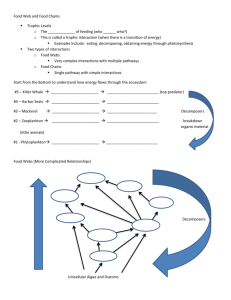Ch. 36.1 Student Notes CD
advertisement
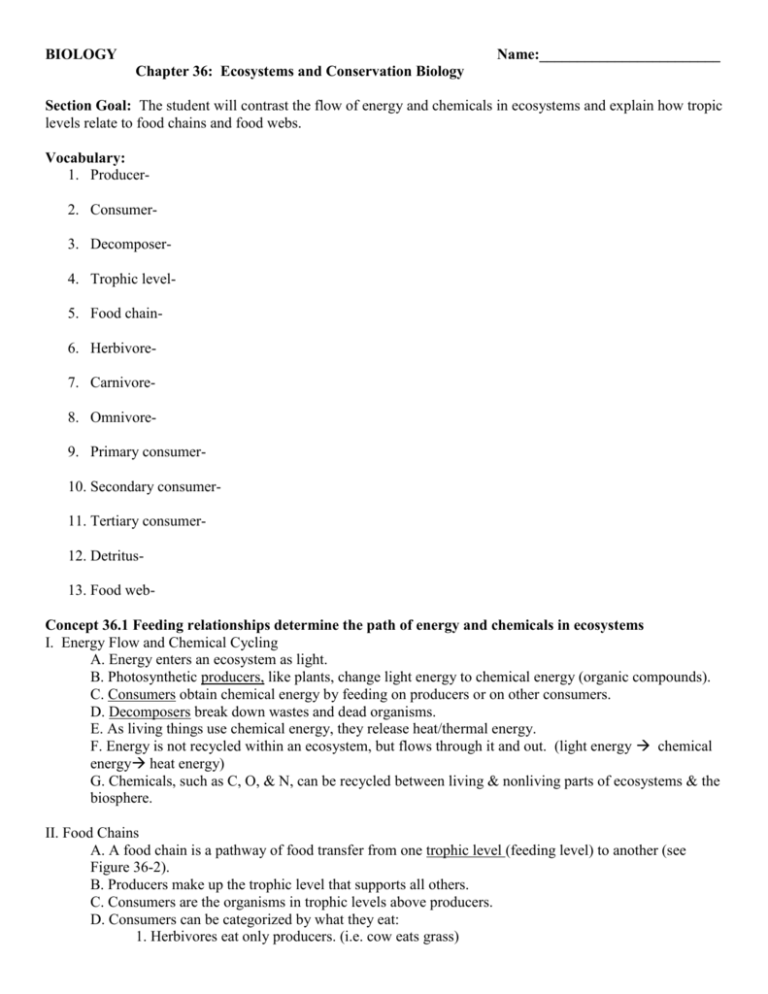
BIOLOGY Name:________________________ Chapter 36: Ecosystems and Conservation Biology Section Goal: The student will contrast the flow of energy and chemicals in ecosystems and explain how tropic levels relate to food chains and food webs. Vocabulary: 1. Producer2. Consumer3. Decomposer4. Trophic level5. Food chain6. Herbivore7. Carnivore8. Omnivore9. Primary consumer10. Secondary consumer11. Tertiary consumer12. Detritus13. Food webConcept 36.1 Feeding relationships determine the path of energy and chemicals in ecosystems I. Energy Flow and Chemical Cycling A. Energy enters an ecosystem as light. B. Photosynthetic producers, like plants, change light energy to chemical energy (organic compounds). C. Consumers obtain chemical energy by feeding on producers or on other consumers. D. Decomposers break down wastes and dead organisms. E. As living things use chemical energy, they release heat/thermal energy. F. Energy is not recycled within an ecosystem, but flows through it and out. (light energy chemical energy heat energy) G. Chemicals, such as C, O, & N, can be recycled between living & nonliving parts of ecosystems & the biosphere. II. Food Chains A. A food chain is a pathway of food transfer from one trophic level (feeding level) to another (see Figure 36-2). B. Producers make up the trophic level that supports all others. C. Consumers are the organisms in trophic levels above producers. D. Consumers can be categorized by what they eat: 1. Herbivores eat only producers. (i.e. cow eats grass) 2. Carnivores eat only other consumers. (i.e. lion eats zebra) 3. Omnivores eat both consumers and producers. (i.e. bear eats salmon & berries) E. Consumers can be categorized by position in a food chain. 1. Primary consumers feed directly on producers (i.e. grasshoppers eating plants) 2. Secondary consumers eat primary consumers. (i.e. mice eating grasshoppers); Tertiary eat secondary… F. Decomposers feed on & break down detritus (wastes & remains of dead organisms). 1. The main decomposers are bacteria and fungi; they’re abundant in soil. 2. All ecosystems include decomposers even though most food chains don’t show decomposers. III. Food Webs A. Feeding relationships are usually more complicated than shown in simple food chains. B. Ecosystems contain many different species that have a variety of food sources. C. Food webs show the feeding relationships between interconnected & branching food chains. Lesson Reflection: 1. Complete the Flow of Energy Through an Ecosystem handout (While going through notes.) 2. Build a Classroom Food Web. Lesson Assessment: 1. How are the movement of energy and the movement of chemicals different? 2. In the following food chain, identify the trophic levels: An owl eats a mouse that ate berries. 3. Draw a food chain with at least three trophic levels. Summary of Key concepts: Complete the Summary of Key Concepts for 36.1 and turn into the box. Technology/Application/Connection to real-world: Study Jams: Food Chains Study Jams: Food Webs Food Web Activity: http://coolclassroom.org/cool_windows/home.html
